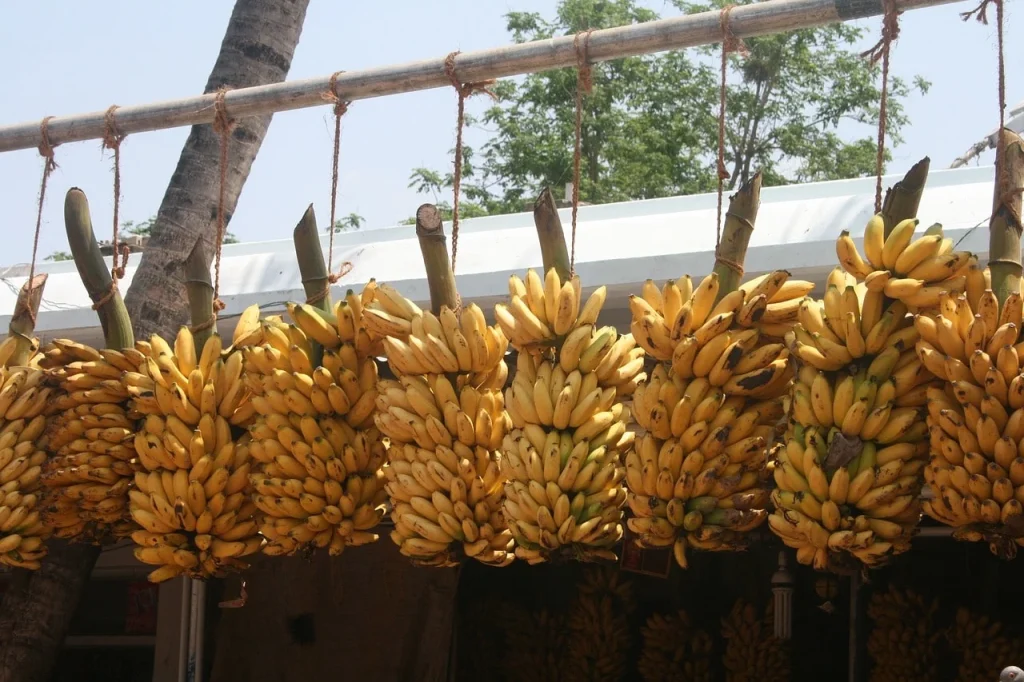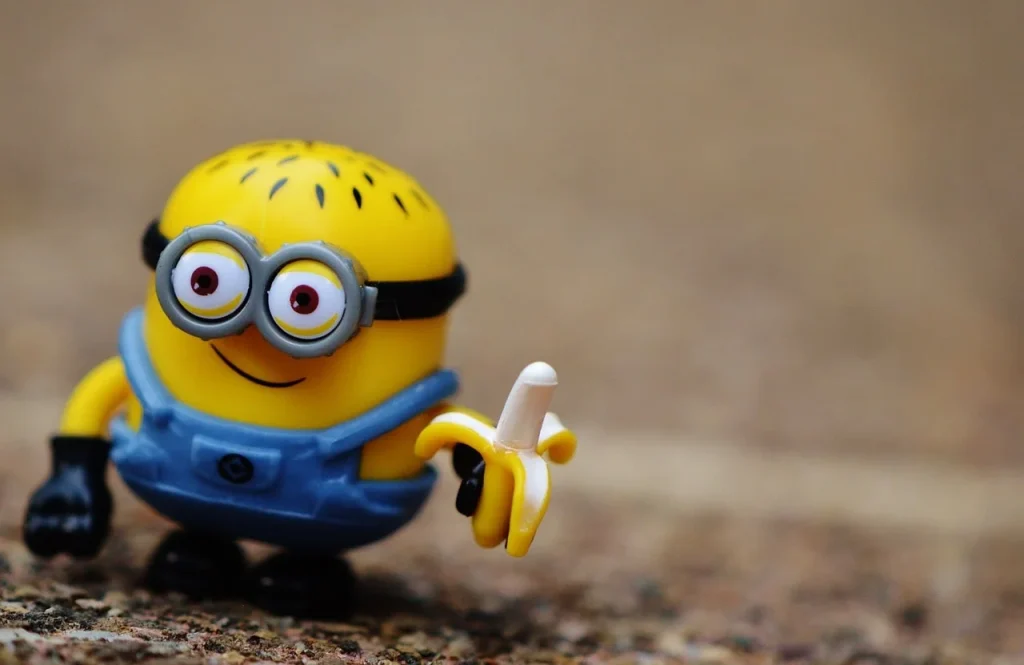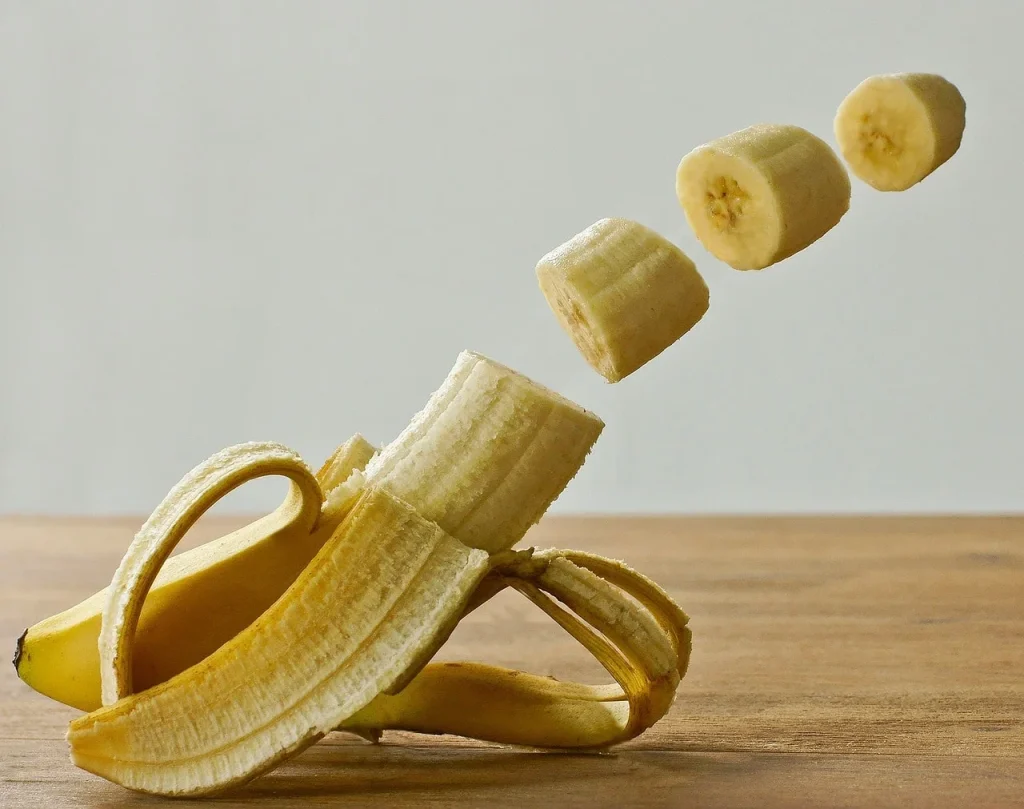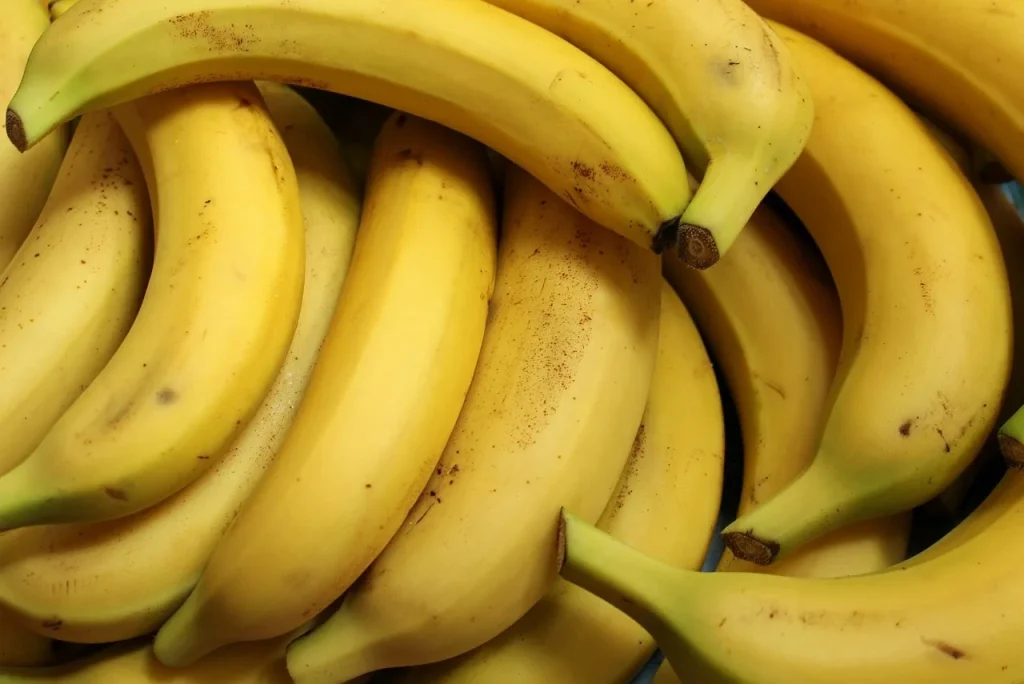Hey there! Let me guess, you thought bananas were just for breakfast or a quick snack, right? Well, you’re in for a treat! Not only are bananas incredibly tasty, but they are also packed with epic facts that will make you see them in a whole new light.
From their humble beginnings on tropical trees to becoming a staple in kitchens around the world, bananas have quite the story to tell. Are you ready to go bananas over some mind-blowing facts?
Life is full of banana skins. You slip, you carry on.
Daphne Guinness
Banana Facts
Dive into the world of bananas, where each fact unfolds the fascinating journey of this beloved fruit. Stay sharp—there’s a quiz at the end to test your expertise!
- The Gros Michel variety, once dominant globally, was nearly wiped out by Panama disease in the 1950s.
- They naturally produce radioactive isotopes due to their potassium content, though it’s not harmful to humans.
- Despite their tree-like appearance, their “trees” are technically an herb, making them the world’s largest herbaceous plant.
- This fruit is seedless, and what we consume today is clones propagated through vegetative reproduction.
- India leads the world in their production, followed by China and Indonesia.
- They can float in water, much like apples and watermelons.
- The inside of their peel can help relieve itching and inflammation from bug bites.
- More than 100 billion of these fruits are consumed annually around the world, making them one of the most popular fruits.
- They undergo a process called “negative geotropism,” meaning they grow against gravity, which gives them their curved shape.
- Their plants are very fast-growing and can reach their full height, sometimes over 25 feet, in just about nine months.
- Blue Java bananas taste similar to vanilla ice cream and are often called ice cream bananas.
- They are naturally radioactive, but you would need to eat more than 10 million bananas at one time to die of radiation poisoning.
- Uganda has the highest per capita consumption in the world; the average Ugandan eats about 500 pounds annually.

- A bunch of bananas is called a hand, whereas a single banana is referred to as a finger.
- There are over 1000 different varieties worldwide.
- The first song recorded with the word “banana” in it was “The Banana Song” sung by Chris Kando Iijima, Joanne Nobuko Miyamoto, and “Charlie” Chin in 1973.
- Wild bananas contain large and hard seeds, with the fruit we eat today being the result of thousands of years of selective breeding.
- Peel contains tryptophan, a precursor for serotonin, which can elevate mood and help fight depression.
- During the 1960s, major producers used a chemical called chlordecone, which was later banned for causing severe environmental and health issues.
- Fiber in the fruit helps promote digestion and alleviate gastrointestinal issues.
- The phrase “going bananas” originated from the behaviors of monkeys when they are given bananas in zoos.
- They are a crucial source of energy for athletes, often eaten during the midpoints of marathons and long races.
- They can ripen significantly faster when placed in a paper bag with an apple or tomato due to the release of ethylene gas.
- Unripe green bananas are high in resistant starch, which can improve insulin sensitivity.
- The yellow color we typically see is due to the breakdown of chlorophyll during the ripening process.
- Extracts from the peel have shown properties that can remove heavy metals from river water, making them potentially useful in environmental cleanup efforts.
- The flower of the plant, also known as the banana heart, is edible and used in various Asian cuisines.
- In 2013, a disease called Tropical Race 4 threatened to wipe out the Cavendish variety, which is most commonly consumed worldwide.

- The peels can be used to polish silverware and leather shoes effectively.
- They are used in making banana ketchup, a popular condiment in the Philippines, which was created during World War II due to a shortage of tomato ketchup.
- Psychologists use the word “bananadine” to describe a fictional psychoactive substance rumored to be extractable from them and studied the spread of misinformation.
- The slippery properties of their peels have been utilized in comedy for over a century, leading to the trope of characters slipping on peels.
- The first shipment of bananas to the U.S. occurred in the 1870s by sea, with Boston receiving the initial cargo.
- The Fair Trade movement has been particularly active in promoting ethical practices in the production and trading of bananas.
- A single plant can bear fruit only once before dying; however, the root system remains alive and can produce new shoots.
- Their leaves are large, flexible, and waterproof, and they are traditionally used as natural plates or wrappers for cooking in many cultures.
- Before the rise of the Cavendish variety, the Gros Michel was actually known for its superior taste and larger size.
- Studies have shown that eating two of these fruits can provide enough energy for a 90-minute workout.

- They can help improve sleep quality due to their high levels of potassium and magnesium, which help relax muscles.
- Their flavor is used in numerous products, from milkshakes and desserts to candies and cereals.
- They become sweeter as they ripen because the starch converts to sugar.
- The fibers extracted from the stem of the plant are used to make textiles and paper in some parts of the world.
- Eating them can help lower blood pressure and reduce the risk of asthma and cancer.
- In the Japanese town of Osaki, a rare type of banana grows that has an edible peel, called the Mongee banana.
- They are a symbol of hospitality in some cultures, often being offered to guests as a welcoming gesture.
- When blended with water, their peel creates a liquid that’s beneficial as a natural fertilizer for plants.
- They share about 50% of their DNA with humans.
- During the 1950s, the banana was used aggressively in American marketing to promote a fun and exotic lifestyle.
- The Cavendish variety might soon be replaced by another due to ongoing disease threats, leading scientists to search for a new viable variety.
- The phrase “banana republic” was coined by the American writer O. Henry to describe politically unstable countries in Central America dependent on exporting a single product, such as bananas.
Banana Myths

Let’s clear the air on some common misconceptions. In the next section, we’ll separate the myths from the truth.
- Bananas should not be eaten at night.
It is commonly believed that they should be avoided at night, yet no scientific evidence supports this claim. In fact, they can be consumed at any time as they contain magnesium and potassium, which are known to aid muscle relaxation and sleep. - Bananas cause significant weight gain.
Despite their sweet taste, they are not directly linked to excessive weight gain. A medium banana contains about 105 calories, making it a nutritious, moderate-calorie snack. Weight gain is influenced more by an overall diet and lifestyle than by a single fruit. - Green bananas are unhealthy to eat.
Green bananas are not only edible but also beneficial. They contain higher amounts of resistant starch, which is praised for its positive effects on gut health and blood sugar control. - Bananas are fattening because they are high in sugar.
While they do contain natural sugars, they are also a good source of fiber, vitamins, and minerals. The fiber content in them helps to regulate the absorption of sugar in the bloodstream, preventing sharp spikes in blood sugar. - Eating bananas leads to constipation.
On the contrary, they are often recommended for easing constipation. The high fiber content in ripe bananas helps to normalize bowel motility. However, eating unripe, green bananas might contribute to constipation due to their higher starch content.
No products found.
Banana Quotes

This section explores how people across cultures have expressed their appreciation for this readily available and delicious fruit.
Time flies like an arrow; fruit flies like a banana.
Groucho Marx
Groucho Marx’s witty play on words highlights the humorous side of language, using “banana” to create a pun about the nature of fruit flies.
Bananas are great, as I believe them to be the only known cure for existential dread.
Jason Mraz
Jason Mraz humorously suggests that bananas might be the remedy for deep philosophical anxiety, showcasing his light-hearted approach to life’s complex questions.
I’m getting so old, I don’t even buy green bananas anymore.
Chi Chi Rodriguez
Chi Chi Rodriguez uses bananas as a symbol of time perception in aging, humorously noting how age affects his shopping habits.
Intellectually, I know that America is no better than any other country; emotionally I know she is better than every other country.
Sinclair Lewis
Sinclair Lewis once humorously remarked about his complex feelings for America using a metaphor involving bananas, highlighting his patriotic bias mixed with intellectual acknowledgment of equality.
A banana a day keeps the doctor away.
Jane Goodall
Jane Goodall plays on the famous apple adage to promote the health benefits of bananas, reflecting her advocacy for natural and simple solutions to health and well-being.
Banana FAQ

As we peel away from the insightful quotes and continue into the FAQs, remember that this is your final segment before the quiz. Read carefully to grasp all the fruitful details!
- Are banana peels edible?
Yes, their peels are edible and can be quite nutritious, containing fiber and additional vitamins. However, they tend to be bitter and tough, so cooking them can make them easier to eat. Make sure to wash them thoroughly to remove any pesticides. - Will bananas raise blood sugar?
They do contain sugar, which can raise blood sugar levels, but they have a moderate glycemic index. The ripeness of the banana also affects this; greener bananas have less sugar and more resistant starch. People with diabetes should eat them in moderation. - Are bananas good for dogs?
They are safe for dogs in small quantities. They can be a healthy treat since they are high in potassium, vitamins, and fiber. However, due to their sugar content, bananas should be given as a treat, not as a staple in your dog’s diet. - Can bananas be refrigerated?
Yes, you can refrigerate them. Refrigeration can slow the ripening process, but the peels may turn brown more quickly. The fruit inside will stay fresh and firm for a longer period compared to keeping them at room temperature. - Are bananas berries?
Surprisingly, yes! Botanically speaking, they are classified as berries. They develop from a single ovary and contain multiple seeds, typical traits of berries, even though their seeds are so tiny, they’re barely noticeable.
No products found.
Banana Trivia

Welcome to the ultimate banana quiz! Get ready to peel back some fruity facts, because if you slip up on any question, you might just find yourself in a banana suit for a day!
Banana Merch
If you are a true fan of bananas, then you definitely need to check out our merchandise. You can find T-shirts, hoodies, mugs, and tote bags for your favorite designs. Feel free to check out all the other designs in our shop.
Conclusion
As we come to the end, let’s appreciate the humble banana. It’s amazing how this yellow fruit is packed with so much goodness and has traveled far to reach our grocery stores.
They make eating healthy easy and delicious, proving that nature often knows best when it comes to nourishment. Always available, they’re a reliable source of natural energy for any moment. Till next time, stay curious and explore more. Cheers.


